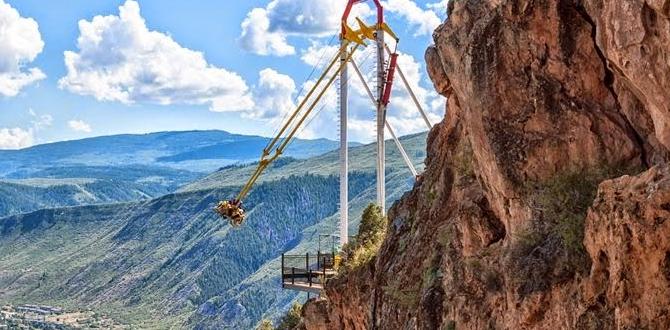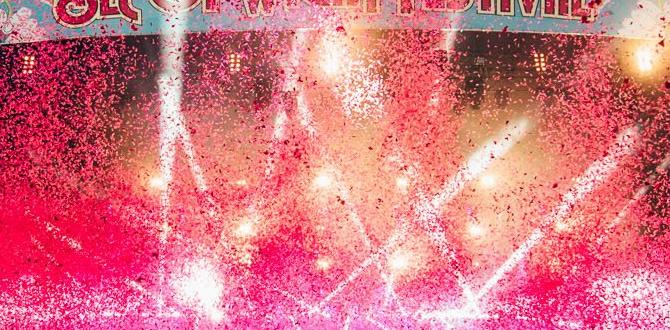Bhutan No-Crowds Itinerary: Your Ultimate Guide to Peaceful Exploration. Discover a curated Bhutan travel plan focused on avoiding peak tourist times and popular spots for a more serene, authentic experience. This guide provides essential steps and insider tips to ensure a quiet and deeply rewarding journey through the Land of the Thunder Dragon.
Planning a trip to Bhutan can often feel like navigating a carefully guarded treasure. While the Kingdom of Bhutan offers incredible beauty and unique culture, many travelers worry about encountering large tourist groups, especially at famous landmarks. This can take away from the serene and spiritual experience Bhutan is known for. But what if you could discover its magic without the crowds? This guide is designed to help you craft a Bhutan no-crowds itinerary, ensuring your journey is peaceful, personal, and truly unforgettable. We’ll walk through simple steps and share proven tips to make your Bhutanese adventure a relaxing triumph, leaving you with cherished memories and a sense of deep connection.
Frequently Asked Questions About Bhutan Travel
Q1: How can I avoid crowds in Bhutan?
A visiting Bhutan during the shoulder seasons (spring and autumn, but avoiding major festival dates) or the winter months (December to February) offers fewer tourists. Additionally, choosing less-visited valleys and towns, and focusing on off-the-beaten-path hikes and cultural experiences can significantly reduce crowd encounters.
Q2: Is Bhutan expensive for tourists?
Bhutan has a unique tourism policy requiring visitors to pay a daily Sustainable Development Fee (SDF). While this can sound costly, it covers accommodation, a guide, transport, and meals, offering good value for a premium, exclusive experience. Traveling during the off-peak season further enhances this value.
Q3: What is the best time of year to visit Bhutan for good weather and fewer crowds?
The shoulder seasons, April to May and September to October, offer pleasant weather. However, for the least crowds, consider visiting from November to March. While the days are cooler (and it can be cold at higher altitudes), the skies are often clear, offering stunning mountain views without the peak season visitor numbers.
Q4: Do I need a visa for Bhutan?
Yes, all tourists (except Indian, Bangladeshi, and Maldivian nationals) planning to visit Bhutan must obtain a visa in advance. The visa application is typically handled by your approved tour operator. Your tour operator will guide you through the process and arrange your visa clearance.
Q5: What are some essential items to pack for Bhutan?
Pack layers of clothing, as temperatures can vary significantly. Include comfortable walking shoes for exploring dzongs and monasteries, a rain jacket, sunscreen, a hat, and sunglasses. For cultural respect, bring modest clothing (long pants/skirts and shirts covering shoulders). If traveling in winter, warm layers are a must.
Q6: Can I travel independently in Bhutan?
Most international tourists (outside of India, Bangladesh, and Maldives) are required to book their trip through a licensed Bhutanese tour operator. This ensures you meet the minimum daily package requirements and have a guide throughout your stay, which contributes to managing tourist flow and preserving the culture.
Q7: Are there specific dress codes for visiting religious sites in Bhutan?
Yes, when visiting monasteries, dzongs (fortress monasteries), and temples, it is mandatory to dress modestly. This means covering your shoulders and knees. Remove your hat and shoes before entering sacred buildings.
How to Craft Your Bhutan No-Crowds Itinerary: A Proven Essential Guide
Bhutan, the Land of the Thunder Dragon, beckons with its pristine landscapes, vibrant culture, and profound spirituality. Yet, the thought of navigating popular tourist spots alongside throngs of visitors can dim even the most adventurous spirit. The good news? With a bit of thoughtful planning, you can experience Bhutan’s magic in tranquil solitude. This guide is your blueprint for a Bhutan no-crowds itinerary, focusing on strategic timing, lesser-known gems, and immersive experiences. We’ll help you bypass the peak season rush and discover the tranquil heart of this extraordinary kingdom.
Understanding Bhutan’s Tourism Policy and Its Impact on Crowds
Bhutan’s unique “High Value, Low Volume” tourism policy is key to understanding how to avoid crowds. The mandatory Sustainable Development Fee (SDF) – currently $100 USD per person per night for all international tourists (except those from India, Bangladesh, and Maldives) – is designed to create a more exclusive and sustainable travel experience. While this policy might seem to deter visitors, it also limits the overall number of tourists, especially when combined with the requirement to book through a licensed tour operator.
This controlled approach means Bhutan generally has fewer crowds than many mainstream destinations. However, certain periods and popular spots still see more visitors. By understanding these nuances, we can tailor your itinerary for maximum serenity.
The Best Times to Visit Bhutan for Peace and Quiet
Timing is everything when it comes to avoiding crowds. While Bhutan’s weather is generally pleasant throughout the year, certain months offer a distinct advantage for a more peaceful journey.
Shoulder Seasons: A Balanced Approach
Spring (March to May): This is a popular time due to blooming rhododendrons and pleasant temperatures. While not as crowded as autumn, some popular sites in Paro and Thimphu can see a moderate number of visitors.
Autumn (September to November): This is considered the peak season for a reason – stunning clear skies, comfortable weather, and vibrant festivals. To avoid the largest crowds within autumn, consider early September or mid-November.
Off-Peak/Winter Months: True Serenity
Winter (December to February): This is the ideal time to avoid crowds. While days are cooler (with temperatures often near freezing in the evenings and mornings, especially at higher altitudes), the skies are incredibly clear, offering breathtaking mountain panoramas. Many days are sunny and comfortable for sightseeing. The landscapes can be dusted with snow, adding a magical charm. Cultural festivals might still occur, but mainstream tourist numbers are significantly lower.
Monsoon Season (June to August): While fewer tourists visit during the monsoon due to rain, the landscapes can be lush and vibrant. However, cloud cover can obscure mountain views, and travel can sometimes be affected by heavy rainfall. This is a less appealing option for most travelers seeking clear vistas.
Recommendation for a No-Crowds Itinerary: Aim for late November, December, January, or February. You’ll experience crisp, clear air, spectacular mountain views, and significantly fewer fellow travelers.
Designing Your Bhutan No-Crowds Itinerary: Key Strategies
Creating a Bhutan no-crowds itinerary involves more than just picking a travel date. It’s about smart choices in destinations, activities, and pacing.
1. Choose Lesser-Known Valleys and Destinations
While Paro (home to Tiger’s Nest) and Thimphu (the capital) are must-sees, they are also the most visited. Balance these with exploration of quieter regions.
Phobjikha Valley (Gangtey): Famous for the Black-Necked Cranes during winter (November to March), this glacial valley is stunningly beautiful and relatively uncrowded outside of crane-watching periods. It offers serene walks, the Gangtey Monastery, and opportunities to experience rural Bhutanese life. Consider spending at least two nights here.
Bumthang Valley: Often called the “spiritual heartland” of Bhutan, Bumthang consists of several valleys (Choekhor, Tang, Chhume, and Ura). It’s dotted with ancient temples and monasteries, and its more remote feel makes it ideal for those seeking peace. It requires a bit more travel time, but rewards with profound cultural immersion.
Haa Valley: Located west of Paro, Haa is a border valley that’s only recently opened up more to tourism. It offers beautiful landscapes, traditional villages, and the chance to experience a more secluded side of Bhutan. The Haa Summer Festival (typically July) can draw visitors, so aim for other times if extreme quiet is your goal.
2. Prioritize Early Mornings and Late Afternoons
Bhutanese tour groups and independent travelers often follow similar schedules. To beat the crowds at popular sites like the Tiger’s Nest monastery (Taktsang Palphug Monastery) or the Punakha Dzong:
Visit early in the morning: Aim to arrive at major attractions right when they open, or even an hour before. This allows you to explore tranquil spaces before the main influx of visitors. For Tiger’s Nest, starting your hike before sunrise is an unforgettable experience.
Explore later in the afternoon: Sometimes, visiting a site in the late afternoon provides a different perspective. As day tours conclude, you might find yourself with more space to appreciate the architecture and atmosphere.
3. Incorporate Off-the-Beaten-Path Hikes and Nature Walks
Bhutan is a hiker’s paradise. While the hike to Tiger’s Nest is iconic, there are countless other trails that offer solitude and stunning scenery.
Bumthang Cultural Trek: Shorter than a high-altitude trek, this allows you to visit remote villages and ancient temples.
Phobjikha Valley Nature Trail: A gentle, scenic walk offering splendid views of the valley floor and wetlands.
Chele La Pass to Haa Valley Hike: This moderate hike offers incredible panoramic views.
Explore rural villages: Ask your guide to take you to villages not typically on standard tourist routes. Engaging with locals in their environment is a deeply rewarding, crowd-free experience.
4. Leverage Your Guide
Your licensed Bhutanese guide is your most valuable asset in crafting a no-crowds experience.
Communicate your preferences: Clearly state your desire for less crowded experiences at the outset of your trip.
Be flexible: Your guide will know the daily rhythms of popular sites and can suggest alternative timings or less-visited viewpoints.
Ask for local insights: Guides can often arrange visits to local homes, handicraft workshops, or even small monasteries that aren’t on the regular tourist circuit.
5. Be Mindful of Festival Dates
Bhutanese festivals (Tsechus) are vibrant and deeply cultural, but they also attract large numbers of both locals and tourists, often filling hotels and popular sites. While experiencing a festival is magical, if your priority is avoiding crowds, be sure to check the festival calendar and plan your trip around these dates. Some significant festivals include:
Paro Tsechu: Spring (March/April)
Thimphu Tsechu: Autumn (September/October)
Haa Summer Festival: July
Sample Bhutan No-Crowds Itinerary (10 Days)
This sample itinerary balances iconic sights with quieter regions and emphasizes off-peak travel. We’ll assume travel in January or February for maximum crowd avoidance and clear skies.
Day 1: Arrival in Paro (Altitude: 2,200m)
Arrive at Paro International Airport (PBH). The flight into Paro is spectacular, offering views of the Himalayas.
Meet your guide and soak in the first Himalayan views.
Transfer to your hotel.
Visit the National Museum (Ta Dzong) and Rinpung Dzong. Visiting these in the late afternoon can mean fewer tour groups.
Explore Paro town.
Accommodation: Paro (consider a guesthouse for a more local feel)
Day 2: Paro Valley Exploration & Optional Hike
Morning: Hike to the Kila Nunnery, a peaceful cliffside monastery that offers beautiful views and a serene atmosphere. This is less frequented than Tiger’s Nest.
Afternoon: Visit the Kyichu Lhakhang, one of Bhutan’s oldest and most sacred temples. It’s tranquil, especially in the early morning or late afternoon.
Accommodation: Paro
Day 3: Transfer to Thimphu (Altitude: 2,334m) – Exploring the Capital
Morning: Drive to Thimphu, Bhutan’s charming capital (approx. 1.5 hours).
En route: Stop at the Tachog Lhakhang Iron Bridge.
Afternoon: Visit the Buddha Dordenma statue for panoramic city views (aim for late afternoon). Explore the Folk Heritage Museum and National Textile Museum for insights into Bhutanese culture without large crowds.
Visit the Takin Preserve.
Accommodation: Thimphu
Day 4: Thimphu – Cultural Insights
Morning: Visit the National Memorial Chorten (an important landmark, so aim for early morning).
Explore the National Institute for Zorig Chusum (School of Arts and Crafts) to see students at work.
Visit the Changangkha Lhakhang, a popular temple with locals, offering a glimpse into everyday Bhutanese devotion.
Spend the afternoon exploring the Handicrafts Market and enjoy a peaceful walk along the river.
Accommodation: Thimphu
Day 5: Thimphu to Punakha (Altitude: 1,250m) – The Lower Valleys
Morning: Drive towards Punakha over the Dochula Pass (3,050m). On a clear day, enjoy stunning views of the Eastern Himalayas. The 108 chortens here are a sight to behold at any time.
Descend into the lush Punakha valley.
Afternoon: Visit the magnificent Punakha Dzong, situated at the confluence of two rivers. Visiting in the late afternoon can be magical as the light softens.
Accommodation: Punakha/Wangdue Phodrang
Day 6: Punakha Valley Exploration
Morning: Hike to Chimi Lhakhang, the “Temple of Fertility,” a gentle walk through rice paddies.
Afternoon: Explore the Khamsum Yulley Namgyal Chorten, offering panoramic views of the valley. The hike is moderate and less crowded than some others.
Consider a leisurely walk through local villages.
Accommodation: Punakha/Wangdue Phodrang
Day 7: Punakha to Phobjikha Valley (Gangtey) (Altitude: 3,000m) – Crane Haven
Morning: Drive to the beautiful glacial Phobjikha Valley. This valley is known for its natural beauty and the wintering grounds of the endangered Black-Necked Cranes.
Afternoon: Visit the Gangtey Monastery, a significant Nyingmapa monastery. Explore the Crane Information Centre.
Take a peaceful walk on the Gangtey Nature Trail through the valley floor. This is an incredibly serene experience, especially in winter.
Accommodation: Gangtey/Phobjikha
Day 8: Phobjikha Valley Exploration & Rural Immersion
Embark on a longer hike within the valley, perhaps towards one of the smaller villages.
Arrange a visit to a local farmhouse for a traditional Bhutanese meal – a fantastic way to experience rural life without crowds.
Enjoy the quiet ambiance of the valley.
Accommodation: Gangtey/Phobjikha
Day 9: Return to Paro (Altitude: 2,200m)
Morning: Begin the scenic drive back to Paro. You can stop at Dochula Pass again for a different view or explore any missed spots on the way.
Afternoon: The highlight for many – the hike to Tiger’s Nest (Taktsang Palphug Monastery). To ensure a crowd-free experience, start this hike extremely early (before sunrise) or very late in the afternoon if you have good headlamps and your guide agrees.
Accommodation: Paro
Day 10: Departure from Paro
After breakfast, you will be transferred to Paro International Airport for your departure.
The serene journey concludes.
Essential Packing for Comfort and Convenience
Traveling to Bhutan, especially during cooler months, requires careful packing to ensure comfort and a stress-free experience. As Michael C. Herrera of Journey Essentials, I always emphasize practical solutions that enhance your journey.
Clothing Essentials
Layering is Key: Pack a mix of lightweight base layers, warm mid-layers (fleece or thermal tops), and a waterproof and windproof outer jacket. Temperatures can fluctuate significantly throughout the day and between different altitudes.
Modest Attire: Essential for visiting monasteries and dzongs:
Long-sleeved shirts or blouses.
Long pants or skirts that reach below the knee.
A shawl or scarf can be useful for covering shoulders.
Comfortable Walking Shoes: You’ll be doing a lot of walking, often on uneven terrain. Sturdy, broken-in hiking boots or comfortable walking shoes are a must.
Warm Socks: Wool or thermal socks will keep your feet warm, especially during colder mornings and evenings.
Gloves and a Warm Hat: Crucial for cooler months and high-altitude passes.
Personal Care and Health
Sunscreen and Lip Balm with SPF: The sun at high altitudes is intense.
Moisturizer: The dry air can affect your skin.
Personal Medications: Bring any prescription medications you need, along with a copy of your prescription.
Basic First-Aid Kit: Include pain relievers, antiseptic wipes, bandages, and motion sickness medication.
Hand Sanitizer: Always useful when you’re on the go.
Adult Diapers/Incontinence Products: For longer travel days or flights, or if you have health needs requiring them, discreet and high-quality adult diapers can provide essential comfort and security. Brands offering good absorbency and a discreet fit are ideal for peace of mind during your journey, allowing you to focus on the experience without worry. Similarly, parents traveling with young children might find child diapers essential for peace of mind on longer drives or flights. Planning for these needs ensures a stress-free journey for everyone involved.
Other Essentials
Backpack Cover: To protect your backpack from rain.
* Reusable Water Bottle: Stay hydrated and reduce plastic waste.




